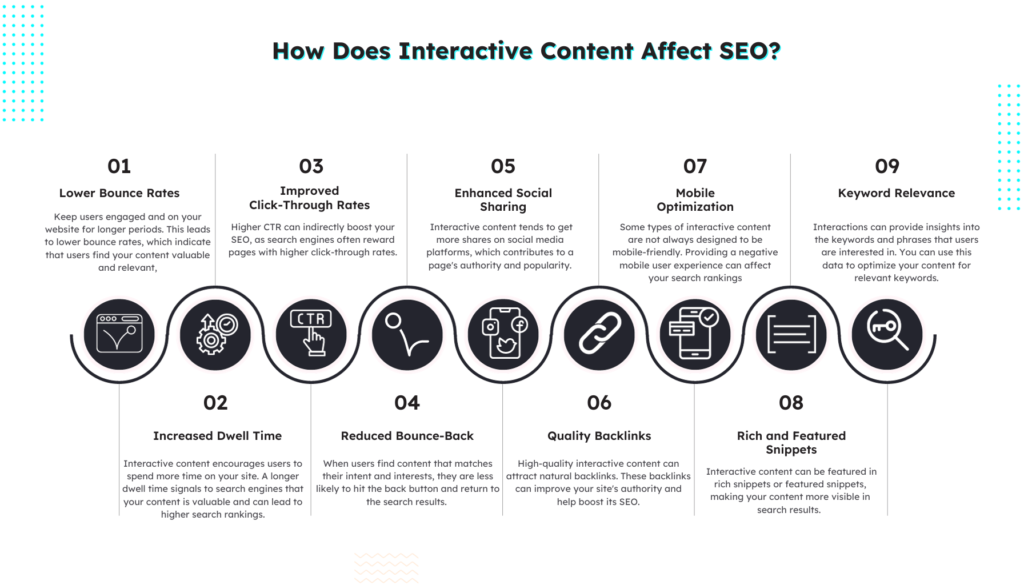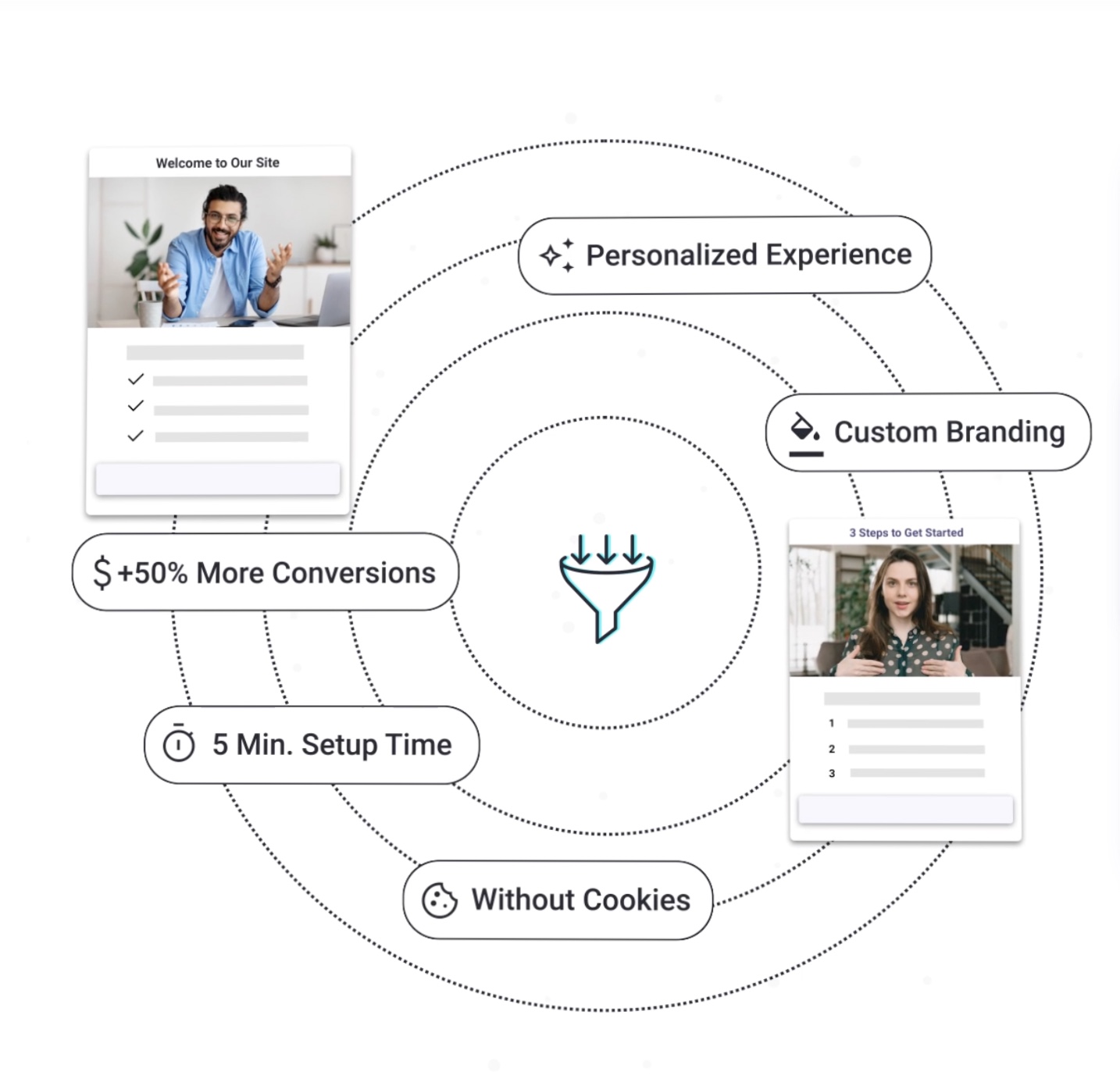How to Engage Your Audience With AI-Powered Interactive Content


Engaging your audience poses a great challenge: how to capture and maintain the attention of an increasingly discerning and easily distracted audience. As consumer preferences evolve, so too must our marketing strategies.
Artificial Intelligence, with its ability to process vast amounts of data, make real-time decisions, and personalize experiences, has empowered marketers to connect with their audience on a level previously thought unattainable.
One of the most compelling and effective applications of AI in marketing is the creation of interactive content. Gone are the days of passive, one-size-fits-all content. Today, it’s all about crafting experiences that actively involve your audience, providing them with a sense of control and personalization. This evolution from static content to dynamic, interactive experiences not only captures attention but sustains it, fostering a deeper connection with your brand.
In this post, we’ll explore the various types of AI-powered interactions, discuss the implementation strategies, and glimpse into the future of this dynamic field.
What is Interactive Content Exactly?
Interactive content refers to digital content that actively engages and involves the audience, allowing them to participate, make choices, or have personalized experiences rather than simply passively consuming information. It encourages users to interact with the content, often through actions like clicking, swiping, answering questions, making choices, or even influencing the content’s direction.
Interactive content is a departure from traditional static content, such as text articles or simple image-based posts, where the audience’s role is limited to reading, watching, or scrolling. Instead, interactive content empowers users to become participants, co-creators, or decision-makers in their content consumption journey.
Here are some common examples of interactive content:
- Quizzes and Polls: Users answer questions to receive personalized results or see how their choices compare to others.
- Surveys and Feedback Forms: Users can share their opinions or experiences, providing valuable data for businesses.
- Interactive Infographics: Instead of static images, users can explore data or information by clicking and interacting with various elements.
- Games and Gamified Content: Users engage in playful activities related to the content, often with rewards or challenges.
- Interactive Videos: Users can make choices within the video, influencing the storyline or outcome.
- Augmented Reality (AR) and Virtual Reality (VR) Experiences: Users can immerse themselves in virtual worlds, try products virtually, or participate in virtual tours.
Interactive content is a powerful tool for marketing, education, entertainment, and engagement because it not only captures attention but also encourages deeper involvement and fosters a sense of ownership in the audience. It’s especially effective for audience segmentation, data collection, and delivering highly relevant and personalized experiences.
How Does Interactive Content Affect SEO?
Interactive content can have a significant impact on SEO (Search Engine Optimization) in several ways. Search engines like Google prioritize user experience, and interactive content can enhance that experience, leading to improved SEO rankings. Here’s how interactive content affects SEO:
- Lower Bounce Rates: Interactive content, such as quizzes, polls, and games, can keep users engaged and on your website for longer periods. This leads to lower bounce rates, which is a positive signal for search engines. Lower bounce rates indicate that users find your content valuable and relevant, which can boost your search rankings.
- Increased Dwell Time: Dwell time refers to the amount of time users spend on a webpage. Interactive content encourages users to spend more time on your site, as they interact with quizzes, videos, or other engaging elements. A longer dwell time signals to search engines that your content is valuable and can lead to higher search rankings.
- Improved Click-Through Rates (CTR): Interactive content can enhance your CTR in search engine results pages (SERPs). For instance, using schema markup to display star ratings or interactive elements in search results can make your listings more enticing. Higher CTR can indirectly boost your SEO, as search engines often reward pages with higher click-through rates.
- Reduced Bounce-Back: Interactive content can help address user intent more effectively. When users find content that matches their intent and interests, they are less likely to hit the back button and return to the search results.
- Enhanced Social Sharing: Engaging and interactive content tends to get more shares on social media platforms. Social signals, such as likes, shares, and comments, can indirectly influence SEO. They contribute to a page’s authority and popularity, which will positively affect search rankings.
- Quality Backlinks: High-quality interactive content, such as interactive infographics, quizzes, or tools, can attract natural backlinks from other websites and blogs. These backlinks can improve your site’s authority and help boost its SEO.
- Mobile Optimization: Careful, some types of interactive content, like quizzes and games, are not always designed to be mobile-friendly. Given that mobile-friendliness is a crucial factor in SEO, providing a negative mobile user experience can affect your search rankings, especially in Google’s mobile-first indexing.
- Rich Snippets and Featured Snippets: Interactive content can be featured in rich snippets or featured snippets, making your content more visible in search results.
- Keyword Relevance: Interactive content often involves questions and user responses. These interactions can provide insights into the keywords and phrases that users are interested in. You can use this data to optimize your content for relevant keywords.

How Can AI Create Interactive Content?
AI can create interactive content by leveraging its capabilities for data analysis, personalization, and automation. Here’s how AI can be used to create interactive content:
Dynamic Content Recommendations:
- User Profiling: AI analyzes user behavior, preferences, and historical data to create user profiles.
- Real-Time Suggestions: Based on user profiles, AI can provide real-time content suggestions, such as recommended articles, products, or videos.
- Personalization: Recommendations are highly personalized, increasing user engagement and conversion rates.
Chatbots and Conversational Interfaces:
- Real-Time Interactions: AI-driven chatbots can engage users in real-time conversations, answering questions, providing recommendations, and guiding them through processes.
- Personalization: Chatbots can tailor their responses based on user data and preferences, creating a more customized interaction.
- Data Collection: Chatbots can gather user data, such as contact information, feedback, and preferences, to inform future interactions.
Interactive Quizzes and Polls:
- Question Generation: AI can generate questions for quizzes or polls based on user interests or historical data.
- Scoring and Feedback: AI can instantly score quiz responses and provide personalized feedback or results.
- Content Recommendations: AI can use quiz or poll responses to recommend related content or products.
Augmented Reality (AR) and Virtual Reality (VR):
- Product Visualization: AI can enable AR/VR experiences that allow users to visualize products in their own space, such as trying on clothes or placing furniture in a room.
- Interactive Tours: Users can take interactive virtual tours of locations, properties, or virtual worlds with AI-generated content.
Interactive Videos and Gamified Content:
- Branching Narratives: AI can create video content with multiple story branches, allowing users to make choices that influence the storyline.
- Gamification: AI can introduce game-like elements, such as challenges, rewards, and competitions, within the content.
Content Generation:
- Automated Content Creation: AI can generate content, including articles, reports, and product descriptions, based on data inputs and templates.
- Content Personalization: AI can dynamically customize content for individual users or audience segments.
Feedback Analysis:
- User Feedback Processing: AI can analyze user feedback, such as comments and reviews, to generate follow-up content or improvements.
- Sentiment Analysis: AI can determine the sentiment of user comments and respond accordingly.
Segmentation and Targeting:
- Audience Segmentation: AI can segment the audience based on demographics, behaviors, and preferences, allowing for content that targets specific groups.
- Customized Campaigns: AI can generate and execute customized marketing campaigns for each segment.
AI achieves these tasks by leveraging natural language processing (NLP), machine learning, and deep learning algorithms. It can process and analyze vast amounts of data to make real-time decisions and personalize interactions. The result is content that actively engages users, enhances user experiences, and fosters a deeper connection between your businesses and your audience.
More Sales From Your Website With AI
Personalized interactions based on your users' behaviour to get +50% more conversions.

Pathmonk Accelerate: AI-Powered Interactive Content that Boosts Conversions Automatically
Pathmonk Accelerate is a comprehensive platform that uses advanced AI and machine learning algorithms to provide personalized, real-time interactions with website visitors. Its core focus is on converting anonymous website visitors into engaged, qualified leads, and ultimately, loyal customers. Here’s how it achieves this:
- Personalization Beyond Click Tracking: While traditional analytics tools may only provide insights into click patterns, Pathmonk Accelerate delves deeper. It creates detailed customer profiles, allowing for real-time personalization based on individual behavior, preferences, and intent.
- Predictive Engagement: Pathmonk doesn’t just react to user actions; it predicts what each visitor needs next and proactively provides it. This predictive engagement helps guide users through the buyer’s journey, making the user experience smoother and more enjoyable.
- Dynamic Interactive Content Recommendations: The platform serves up dynamic content recommendations that are finely tuned to match the user’s interests. Whether it’s suggesting relevant articles, product recommendations, or tailored content paths, Pathmonk ensures that every interaction is meaningful.
By engaging visitors in personalized, meaningful interactions, Pathmonk Accelerates achieves 50% more website conversions automatically, without having to change the website. Plus, its ability to segment and target users also means that the leads generated are more qualified, increasing the likelihood of turning them into paying customers.
In the competitive world of digital marketing, Pathmonk Accelerate stands out as a powerful tool if you’re looking to take your AI-powered interactive content to the next level. It automates the conversion process, making it easier than ever to engage your audience and turn them into satisfied customers. If you’re serious about boosting conversions automatically, try our interactive demo to preview how it will work on your site.





